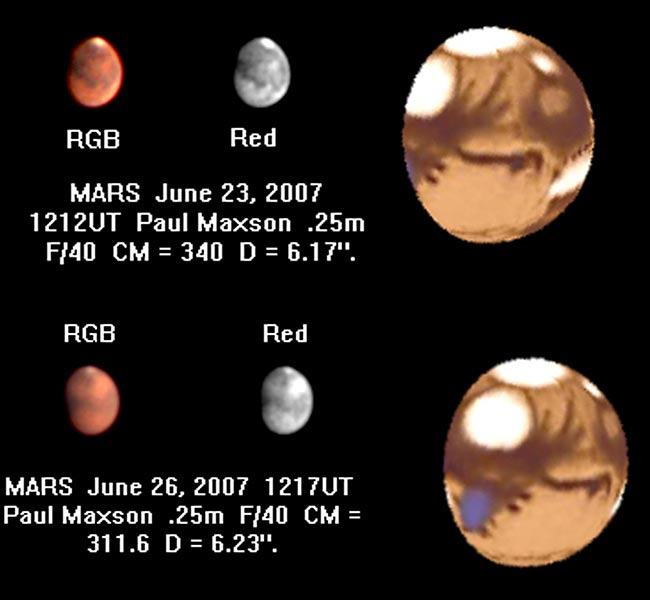Mars Rovers Lose Power as Massive Dust Storm Grows

A major dust storm on Mars has worsened and is causing the Mars Exploration Rovers to lose power.
Opportunity's highly anticipated and risky entry into Victoria Crater is delayed for at least several days, NASA announced.
The regional storm, first reported by SPACE.com, is the most severe to hit the rovers since they began exploring Mars in January 2004. Already last week it was thousands of miles wide. At first, scientists did not expect it to affect rover operations.
But dust from the storm is partly blocking sunlight, which the rovers need in order to recharge their batteries via their solar panels. Opportunity's operations were scaled back June 30 to conserve power, according to the statement.
"The storm is affecting both rovers and reducing the power levels on Opportunity," said John Callas, Mars Exploration Rover project manager at NASA's Jet Propulsion Laboratory. "We are keeping an eye on this as we go forward, but our entry into Victoria Crater will be delayed until no sooner than July 13."
The storm is expected to continue for at least another week. In the past, regional tempests have been known to grow and engulf the entire planet.
"We have some data that show the atmospheric opacity is decreasing, so the storm might have peaked and we may have passed the worst of this," Callas said. "The situation could improve quickly from here, but we will have to wait and see."
Breaking space news, the latest updates on rocket launches, skywatching events and more!
Opportunity is perched near "Duck Bay" at the rim of Victoria Crater on Meridiani Planum.
Pictures from NASA's Mars Reconnaissance Orbiter show the storm is regional and includes several local areas of especially high dust activity. The images were not released. The storm has been moving eastward and toward mid-latitudes and is now also kicking up more dust at Spirit's location, on the opposite side of the planet at Gusev Crater.
The rovers measure atmospheric dust daily, and Opportunity revealed a new record, with the air's "opacity level" rising from 1.0 to 3.3. Solar array energy on the rover dropped from 765 watt-hours to 402. Dust levels at Spirit's location were much lower.
"While this only represents enough dust to coat the planet to about the thickness of a human hair, it is enough to decrease the brightness of the noon sun by 96 percent compared to a completely clear atmosphere," said Steve Squyres, a Cornell University researcher who is principal investigator of the rover mission. "The solar arrays also receive light that is scattered from the dust, so the decrease in power is not nearly that great."
"We have not seen dust measurements this high on either rover before," Callas said. "If the dust levels were to increase further and stay elevated for several days, there is a risk to how well Opportunity could continue to work in this darkened environment."
- Video: Mars Rover Dynasty
- Huge Dust Storm Breaks Out on Mars
- Risky Crater Descent Planned for Mars Rover

Rob has been producing internet content since the mid-1990s. He was a writer, editor and Director of Site Operations at Space.com starting in 1999. He served as Managing Editor of LiveScience since its launch in 2004. He then oversaw news operations for the Space.com's then-parent company TechMediaNetwork's growing suite of technology, science and business news sites. Prior to joining the company, Rob was an editor at The Star-Ledger in New Jersey. He has a journalism degree from Humboldt State University in California, is an author and also writes for Medium.
